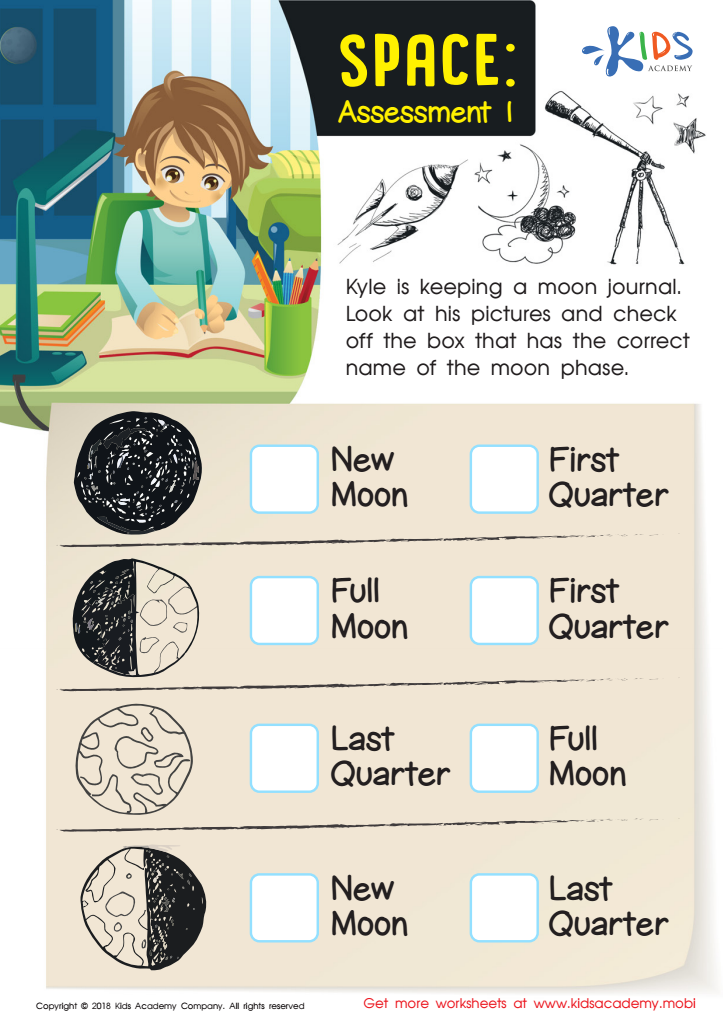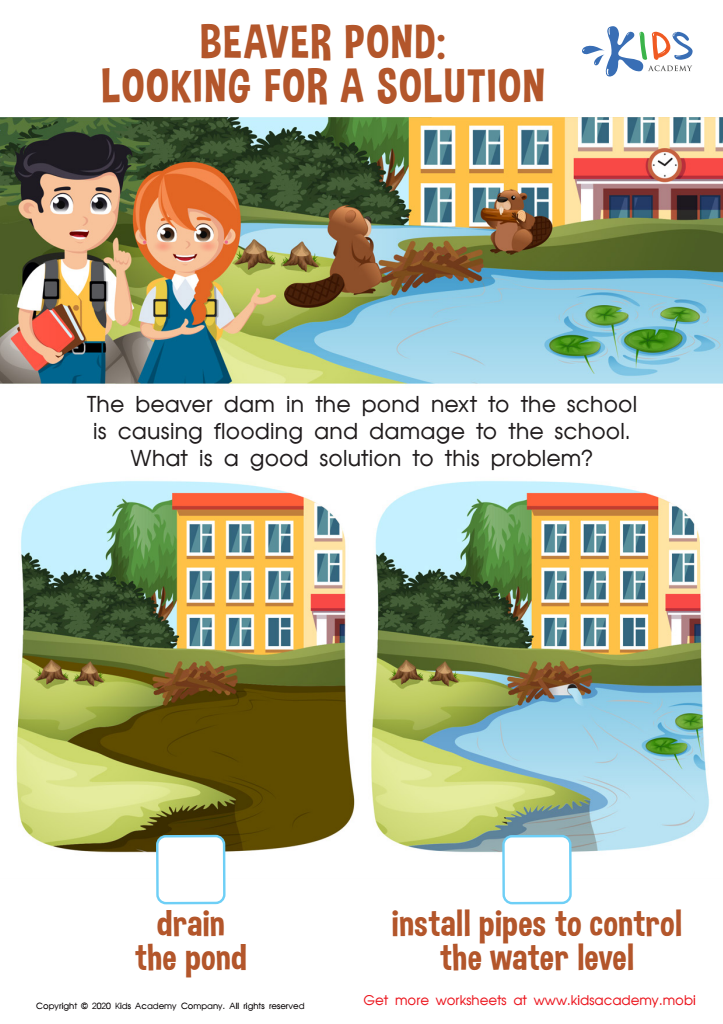Understanding habitats Science Worksheets for Ages 7-8
3 filtered results
-
From - To
Explore the fascinating world of habitats with our engaging Science Worksheets designed for ages 7-8! These worksheets help young learners discover the diverse environments where animals and plants thrive. Through fun activities, children will identify different types of habitats, understand the interconnectedness of ecosystems, and learn about the specific needs of various organisms. Perfect for reinforcing classroom teachings or enhancing home learning, our worksheets encourage critical thinking and creativity. Each worksheet is crafted to promote curiosity and a love for nature, making science enjoyable and accessible for your child. Dive into the wonders of habitats today and ignite your child's scientific imagination!


Space: Assessment 1 Worksheet


Beaver Pond: Looking for a Solution Worksheet


Animals and Plants: Assessment 2 Worksheet
Understanding habitats is crucial for children aged 7-8, as it lays the foundation for their appreciation of the natural world and fosters responsible environmental stewardship. For parents and teachers, engaging with habitats science at this age ignites curiosity, encourages inquiry-based learning, and promotes critical thinking skills. Children learn about different ecosystems, such as forests, wetlands, and deserts, and the diverse life forms that inhabit them. This knowledge helps them recognize the importance of biodiversity and the interdependence of species within these environments.
Moreover, exploring habitats aids in developing essential skills, such as observation, data collection, and analysis. As children examine their surroundings—whether in a local park or their backyard—they gain hands-on experience with scientific concepts, enhancing their understanding of biology and ecology. Discussing the impacts of human activity on habitats also fosters awareness of global issues like climate change and conservation, equipping children with the knowledge needed to become environmentally conscious adults.
By prioritizing habitats science, parents and teachers not only enrich the educational experience but also inspire a sense of responsibility towards the planet, ensuring that the next generation is prepared to protect and preserve the natural world.

 Assign to My Students
Assign to My Students















